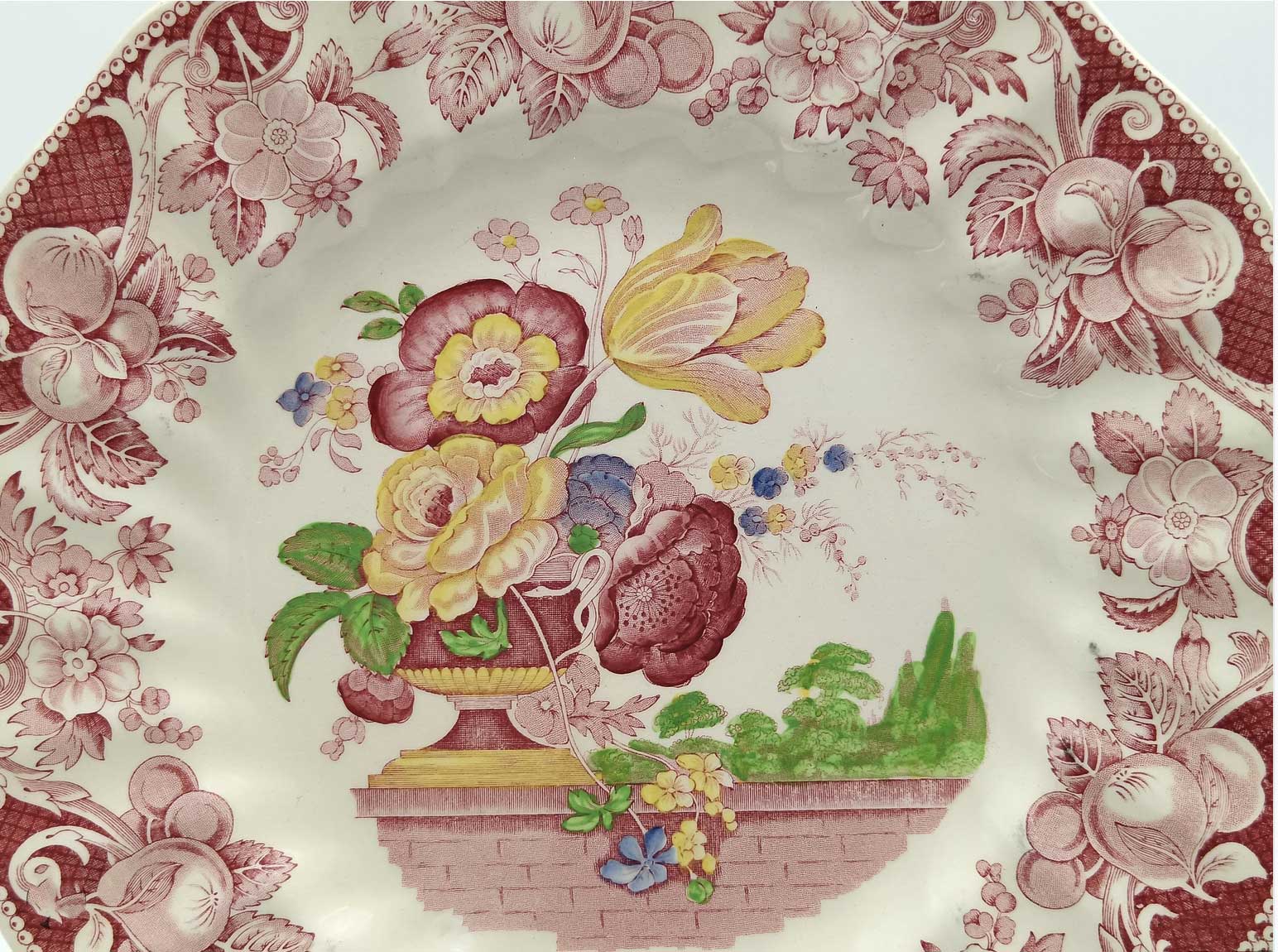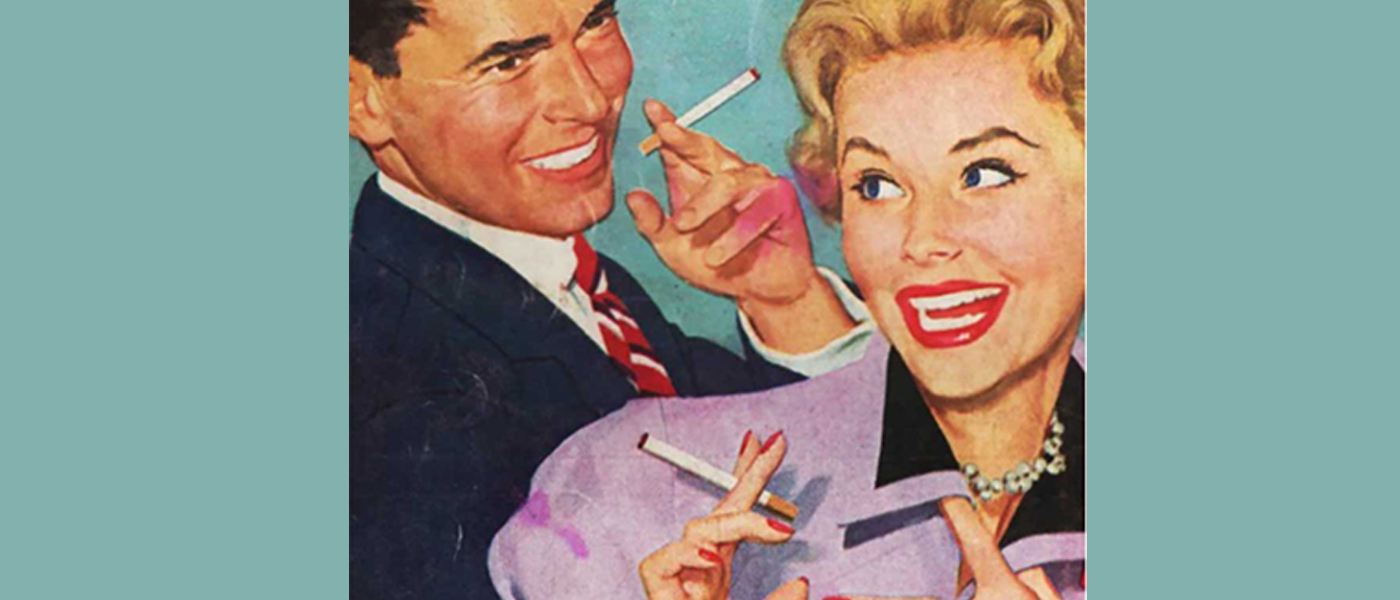
Molded meals Aspics inspired bizarre dishes, but rarely appetite
Apsics remain quite common in European cultures. For instance, this colorful shrimp and veggie aspic makes a delightful Italian lunch entree.
(Image courtesy of La Cucina Italiana)
April 2025
Cover Story
Molded meals
Aspics inspired bizarre dishes, but rarely appetite
by Corbin Crable
It seems that aspic – that clear, savory jelly, not to be confused with Jell-O – was ever present in the cookbooks of the 1950s. It surrounded fruits and vegetables, eggs, poultry, even fish. If it was edible, it could be suspended in gelatin and pass as a midcentury dinner party “treat,” assuming you held a very broad definition of the word.
The idea today, of course, doesn’t just seem silly; it’s downright stomach-turning. But talk to an older family member like a grandmother or an aunt, and at least one of them will brag about her “famous” gelatin concoction that can be found at every family gathering (usually untouched). How did the idea and execution of aspic dishes come about, and why do they make us chuckle and cringe?
There’s always room for Jell-O
First of all, a distinction must be made between aspic and its more popular cousin, Jell-O. Though both are made using gelatin, which itself is made of animal collagen (read: cartilage and bone), the powdered gelatin dessert with sugar added was invented in 1897, and, within its first decade of existence, marketed as “America’s Favorite Dessert.”

Colorful stained glass confetti gelatin dessert
Who could resist this colorful stained glass confetti gelatin dessert? (Image courtesy of Taste of Home)
Aspic, meanwhile, is simply the savory jelly version, made with fish stock or meat stock. Unlike Jell-O salads, which still make appearances at potluck dinners or family gatherings, the aspic’s time on Americans’ dinner plates has largely passed. Both Jell-O and aspics can be molded into decorative shapes, and aspics are usually clear, though some are amber in color. Before refrigeration, aspics were used to protect food from air. Delicate and sliceable aspics (two of the three types of aspic), enhance the food’s flavor; some cooks even use aspics as a decoration (decorative aspic is the third and final type), according to author Wayne Gisslenen’s book “Professional Cooking.”
“Aspic looks kind of weird, kind of futuristic, but at the same time kind of old school,” writes Samantha Maxwell of Tasting Table, a fan of the dish. “But there’s also that unfair association with all those weird Jell-O salads that float around the Internet every few months. These negative impressions mean that some of us will never get to savor the fun, jelly-like joy that is quality aspic.”
If you’ve ever had bone broth, you might already know the taste of aspic (a French version is called “chaud froid,” which translates to “hot-cold,” a reference to boiling the meat broth to let it chill and congeal, Maxwell notes).

Terrine of Garden Vegetables
This image of a dish called Terrine of Garden Vegetables, featured in 1970s cookbooks, can nearly always be found on aspic-related social media pages as an example of the dangers of abusing gelatin in the kitchen. (Image courtesy of Facebook)
Wiggly, jiggly … and savory
The earliest references to meat aspics in recipes and texts related to coking appear as early as the 8th century, and vegetable aspics soon followed. By the early 19th century, aspics were popular in Europe. According to MyRecipes, in the centuries before the Industrial Revolution, aspic was considered “haute cuisine” something only the wealthy consumed. But by the mid-19th century, gelatin became easier to produce, thus it became more widely available and more cost-effective to those who wanted to give the exotic dish a try. And at the dawn of the 20th century, aspics gained a following in the United States. At the height of its popularity in the mid-20th century, celebrity chef Julia Child introduced many Americans to the dish.
“Of course, eating these foods in what we now consider to be a Jell-O mold might seem like a strange practice these days,” Maxwell notes, “but at the time, aspic was at the height of dinner party trendiness.”

Traditional Jell-O was stark
Though the difference between aspic and traditional Jell-O was stark – one savory, the other sweet – Jell-O did briefly produce savory flavors in the mid-20th century as a response to the popularity of aspics. Those flavors included vegetable, celery, and tomato – and apparently, they served as a solution to that age-old quandary of what to do with dinner leftovers. Those savory flavors have since been discontinued. (Image courtesy of Facebook)

Prosecco Fruit Salad Aspic
Though plenty of aspics inspire shock and even disgust, others, such as this prosecco fruit salad aspic, can look almost like a work of art. (Image courtesy of The Online Culinary School)
Unlike Jell-O, which is relatively simple and quick to prepare, aspic is quite labor-intensive, Maxwell continues.
“Aspic takes so long to make because the cook must boil the bones and cartilage long enough to release the gelatin that gives aspic its signature jiggle,” she writes.
By the 1960s, however, aspics were falling out of favor with the public, instead being relegated to the category of “cringe-worthy, bizarre recipes of yesteryear” sections of America’s cookbooks. So, while it doesn’t appetize us – especially the aspics centered around cuts of meat – the aspic has never failed to entertain, shock, and even make us chuckle.

Contemporary Cookbook
This contemporary cookbook, published in 2012, is one of a few that bring the aspic to the forefront of the kitchen. (Image courtesy of Amazon)

Jules Harder, chef
An 1874 portrait of Jules Harder, chef at The Palace Hotel in San Francisco. Harder poses with a seafood aspic. (Image courtesy of Atlas Obscura)
Artsy Aspics
“Even if aspic suddenly became more accessible to some, it never lost its ability to shock and delight,” Maxwell writes. “Something about a jiggling mass of gelatin wriggling its way out of a mold to be revealed, shining and beautiful, on a plate before an audience of guests will never get old. Even if you never wanted to touch grandma’s weird Jell-O salad, you have to admit that it at least looked pretty cool.”
Today, it seems, this unique dish has found a strange second life as a medium for artists.
“Some people are actually viewing aspic as a medium for making art,” Maxwell shares. “It makes sense when you see a great wobbling aspic-imbued creation in front of you. When the ingredients are placed just right, aspic molds can be stunning.”
Even if you’re not an artist, the creation of aspic makes sense when it comes to reducing food waste – after all, according to the U.S. Department of Agriculture, 30%-40% of our nation’s food supply is wasted. Much of that waste, Maxwell reminds us, comes from meat.
“Not everyone likes to eat bones, organ meats, and other parts of animals that are unfairly deemed undesirable,” Maxwell writes. “If, after preparing dinner, you have bones, tendons, or cartilage that you were just going to throw into the trash, consider using it to try your hand at making aspic. It’s a fun project to try, and it’ll help you squeeze more money out of your grocery run.”

Advertisement from 1910
Who needs a cool glass of lemonade on a summer’s day when you can enjoy a nice, refreshing summer salad made with gelatin, mayonnaise, chopped olives, and crab? Advertisement from 1910. (Image courtesy of Atlas Obscura)

Copper jello molds
Copper jello molds are quite collectible. They really gained popularity in the 1920s, and you may remember your grandmother owning and using one from the 1950s or 1960s. (Image courtesy of Laurel Leaf Farm)
Fans in cyberspace
Even if you’re aspic-averse, you can still enjoy the artistry and creativity that the dish inevitably inspires. The presence of social media groups have drawn those who recall aspics of the past with equal parts fondness and revulsion – groups such as Facebook’s “Crimes against Jell-O and vegetables and other mid-century transgressions” and “Aspics with threatening auras” are a veritable treasure trove of images of gelatin-based creations from both the past and present. According to author Diana Hubbell of Atlas Obscura, another group, “Show Me Your Aspics,” has drawn more than 45,000 members, thanks to Chef Ken Albala, who first began to become interested in aspics in the last five years.
“As with most people in this particular Internet subculture, members of ‘Show Me Your Aspics’ revel in unpalatable flavor combinations,” Hubbell writes. “Among the more popular memes that have been circulating as of late is an aspic set in a Bundt pan mold, swimming with diced Spam, canned oysters, olives, frozen peas, carrots, kiwis, and a garnish of spray cheese. Tristan and Taylor Collier, who invented the dish in 2019, dubbed it, ‘How to get out of potlucks for the rest of your life.’”
And, like fashion or music, culinary trends are cyclical, says Albala in Hubbell’s article. The chef is confident that aspics will make a larger comeback.
“[Gelatin] is one of the very few foods that goes so radically in and out of fashion from epoch to epoch,” Albala says. “We’re in one of those periods where it’s totally out of fashion. That’s because everything Jell-O stood for—progress, modernity, bright colors—stands in contrast to the idea of the natural, the sustainable, the artisanal. … There are these patterns of popularity and I think [gelatin’s return] is inevitable.”
Do the Hustle! Disco made us boogie-woogie the night away in the ‘70s
The iconic mirror ball, setting the tone and delighting disco dancers for decades. (Image courtesy of dancepoise.com)March 2025Cover StoryDo the Hustle! Disco made us boogie-woogie the night away in the ‘70sby Corbin CrableThose who remember the bygone days of disco...
You’re 75, Charlie Brown! Good grief! Peanuts gang has made readers chuckle since 1950
Peanuts Gang Valentine image (image courtesy of schulz museum)February 2025Cover StoryYou’re 75, Charlie Brown! Good grief! Peanuts gang has made readers chuckle since 1950by Corbin CrableOne beloved American comic strip has allowed readers to see the world through...
The Name of Luxury Royal Doulton has stood for the finest in bone china, ceramics since 1815
Royal Doulton “Pomeroy,” pattern # D5270. Inspired by Davenport engravings of 1793, made circa 1933-60. (image courtesy of cynthiafindlay.com)Dec 2024 / Jan 2025Cover Story The Name of Luxury Royal Doulton has stood for the finest in bone china, ceramics since 1815by...
Got a light? Smoking accessories continue their collectible streak
If there’s one thing advertising in the 1950s and ‘60s taught us, it’s that smoking was an activity that brought people together. (Image courtesy of Pinterest)November 2024Cover Story Got a light? Smoking accessories continue their collectible streakby Corbin...
A real cut-up Jack-o’-lanterns bring whimsy, fright to Halloween
Treasure your creatively-carved jack-o’-lantern while you can – they’ll begin to get soft and moldy after roughly three to five days. (Image courtesy of Manicpumpkincarvers.com)October 2024Cover Story A real cut-up Jack-o’-lanterns bring whimsy, fright to Halloweenby...
A bridge to another time Covered bridges still stir up our nostalgia
Missouri’s Sandy Creek Covered Bridge, located in Hillsboro, is seen framed by winter snow. (Image courtesy of Facebook)September 2024Cover Story A bridge to another time Covered bridges still stir up our nostalgiaby Corbin CrableThe covered bridge The covered bridge...
Fun Under The Big Top Circus collectibles reflect colorful history, memories
This vintage-looking circus tent evokes a feeling of nostalgia and memories in the making. (Image courtesy of Vecteezy.com)August 2024Cover Story Fun Under The Big Top Circus collectibles reflect colorful history, memoriesby Corbin CrableRevelers young and old have...
Adventure Awaits Travel posters jump-start travelers’ wanderlust
The Royal Mail Lines Pacific Line took travelers to any number of South American countries. The cruise ship company’s life was short, operating only from 1932 to 1965. (Image courtesy of antikbar.co.uk) July 2024Cover Story Adventure Awaits Travel posters jump-start...
Privacy, please Outhouses were a part of daily lives in centuries past
Outhouses usually were located 50 to 100 yards from the back of one’s home. (Image courtesy of Daniel Coronoa / Unsplash.com) June 2024Cover Story Privacy, please Outhouses were a part of daily lives in centuries pastby Corbin CrableWe all take indoor plumbing for...
Two of a kind Salt and pepper shakers make inexpensive, colorful collectibles
These shakers have their original cobalt blue glass liners with silverplated frames and lids. (Image courtesy of Antiques and Teacups) May 2024Cover Story Two of a kind Salt and pepper shakers make inexpensive, colorful collectiblesby Corbin CrableIt’s one of the...











